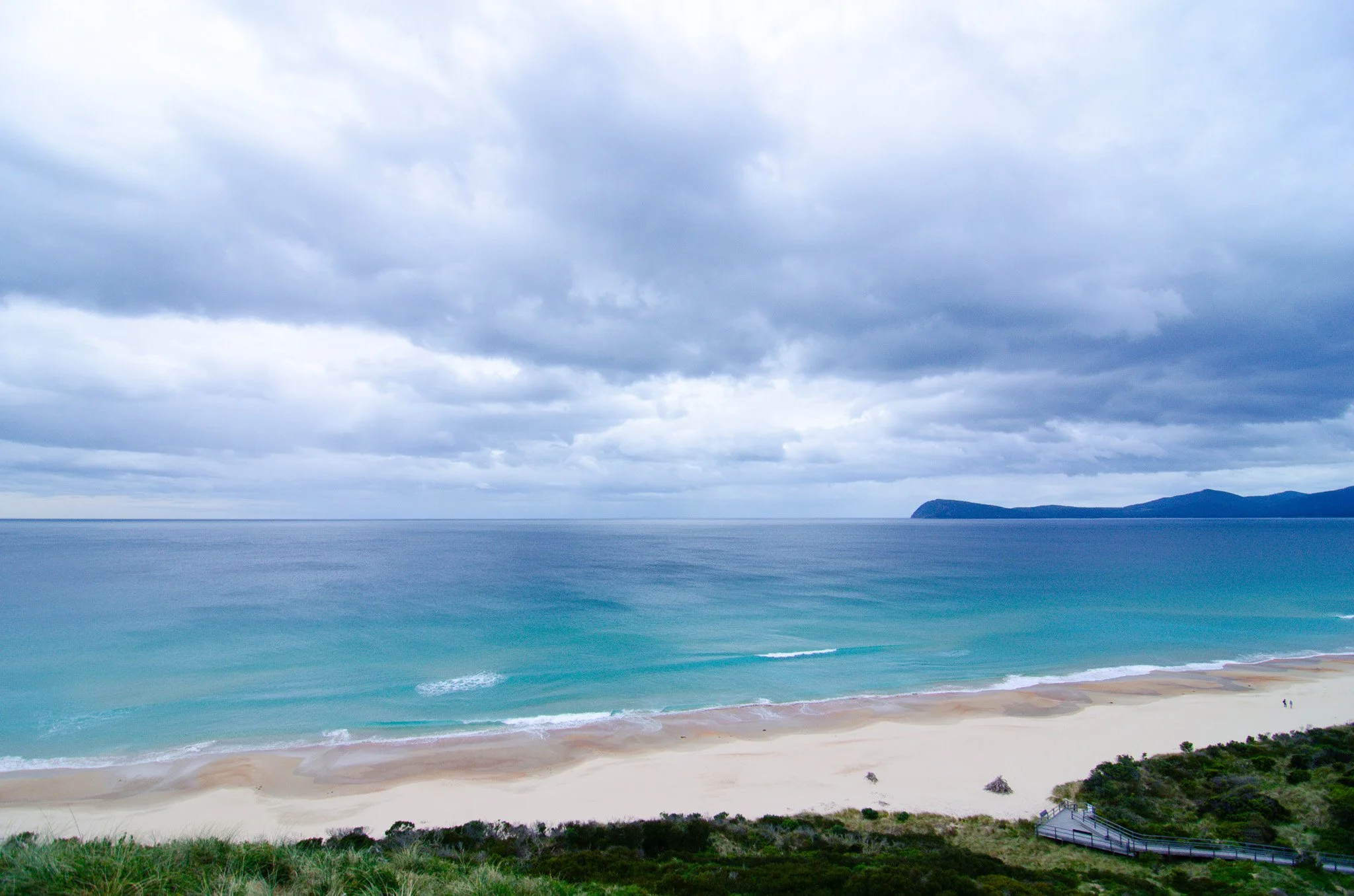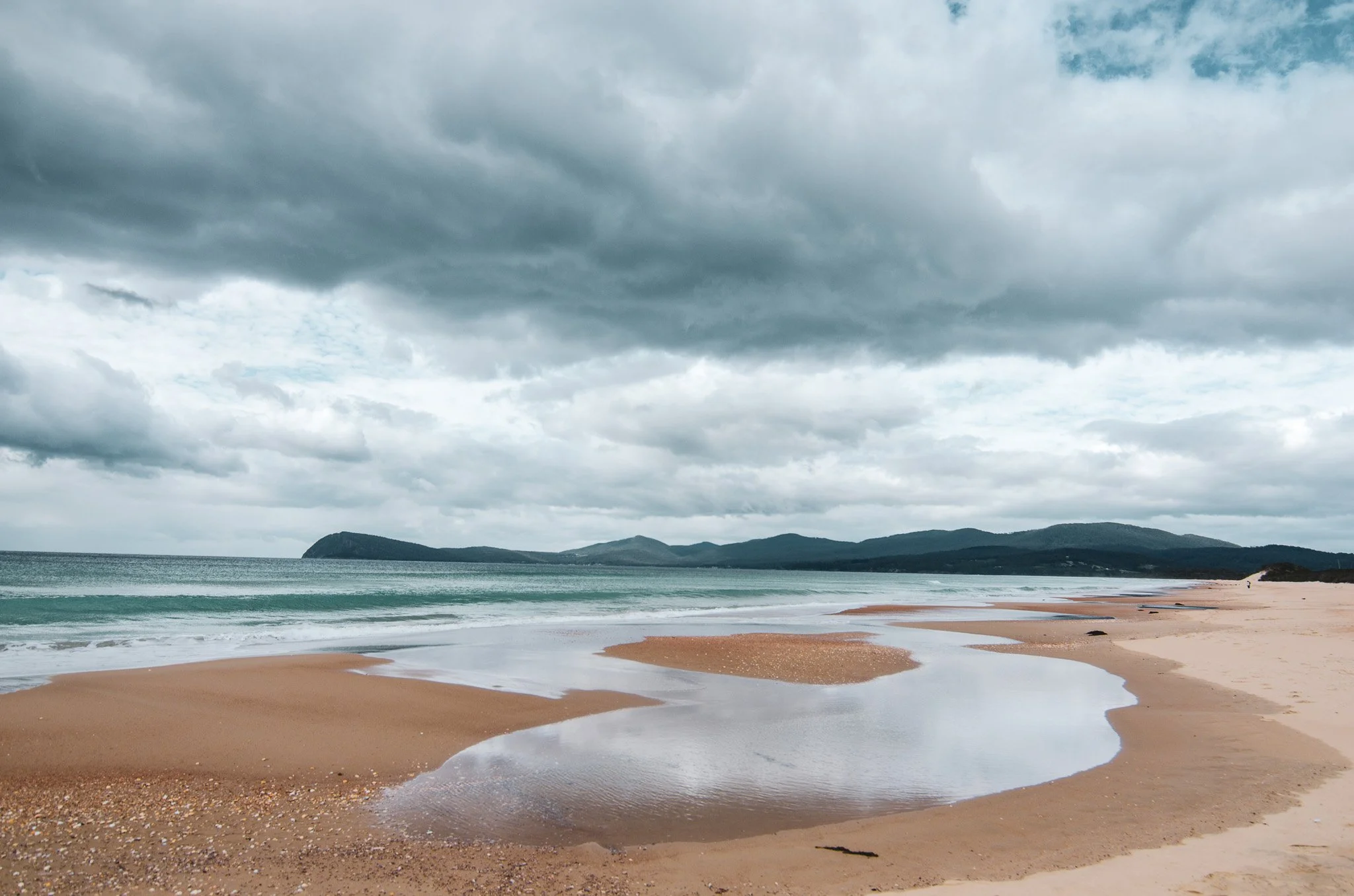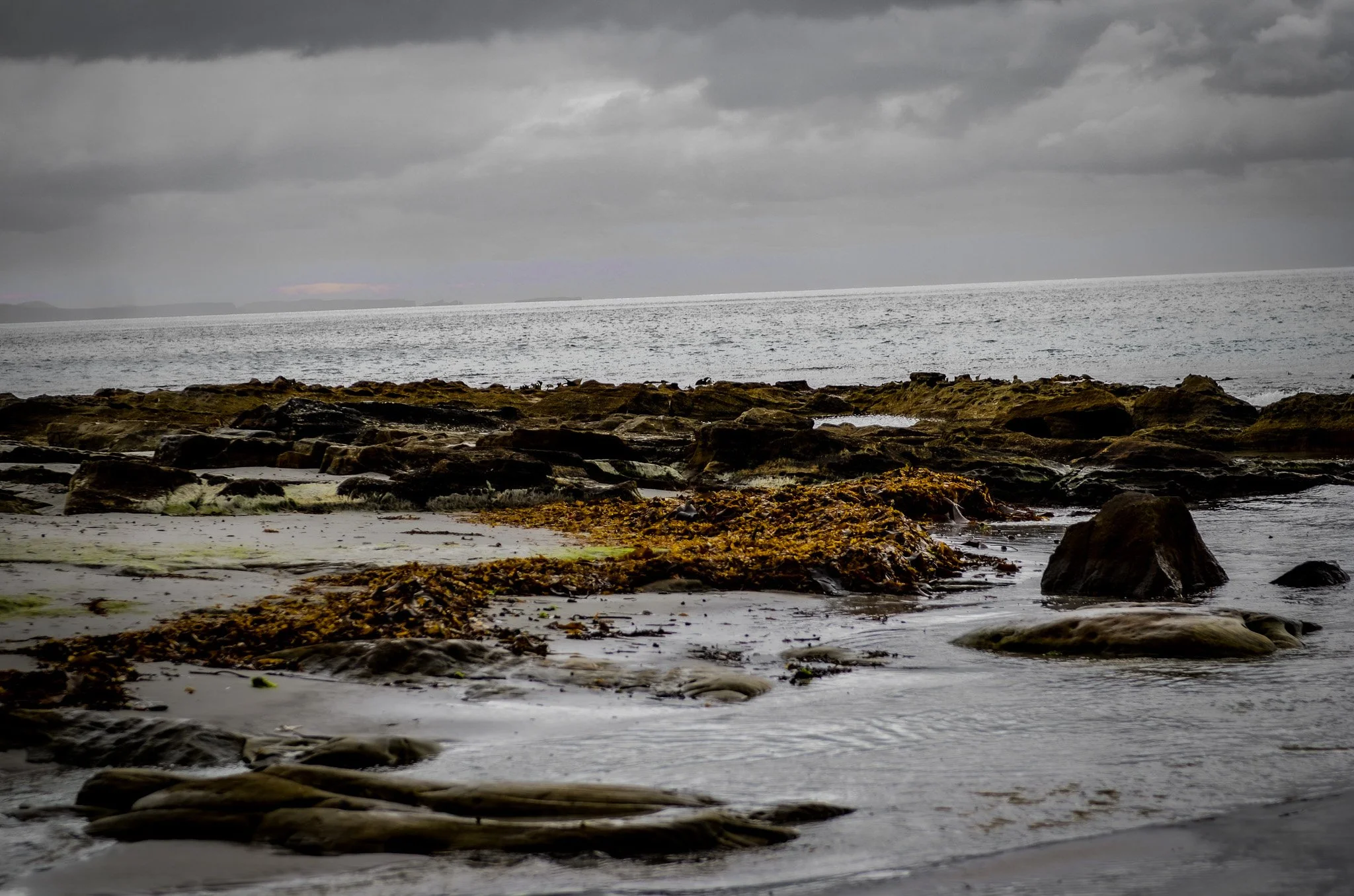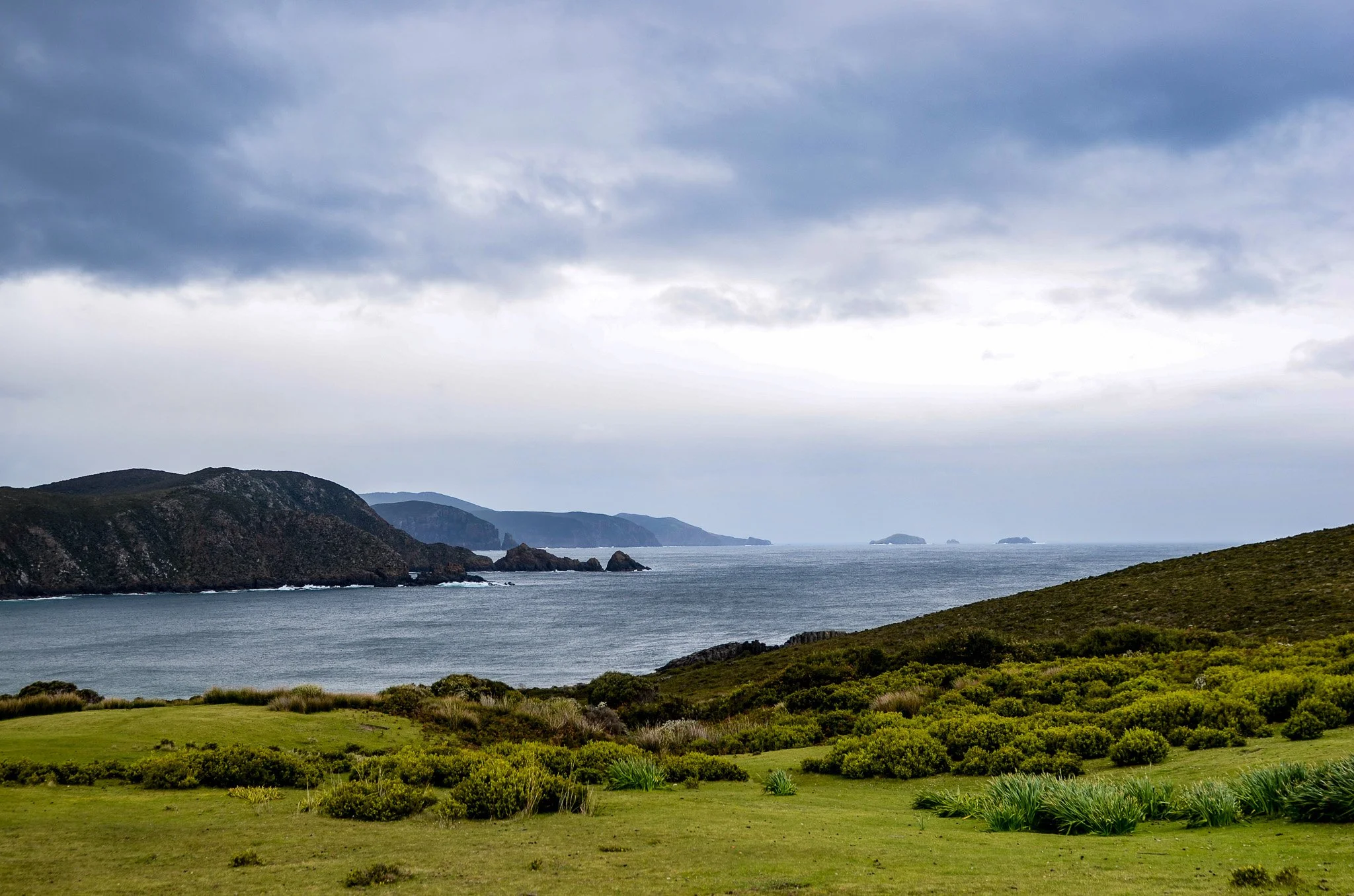Tasmania Trip - Part 8
A Day on Bruny
Today, we had just one destination in mind: Bruny Island — a place of rugged beauty, rich flavours, and timeless charm. Accessible only by vehicle ferry, the journey begins at Kettering, a sleepy little town about 35 minutes south of Hobart. From there, a short 20-minute ferry ride carried us across the d’Entrecasteaux Channel to Roberts Point. The ferries run frequently, and while there’s usually no need to pre-book, I can imagine the queues stretching long during peak seasons.
Bruny Island is technically two islands — North Bruny and South Bruny — joined by a narrow isthmus known as The Neck. South Bruny is where nature truly shows off: towering sea cliffs, secluded coves, dense rainforests, and sweeping beaches, all tucked into the dramatic landscape of South Bruny National Park.
But Bruny isn’t just a visual feast — it’s a paradise for food lovers, too. The island is famed for its local produce: creamy cheeses, freshly harvested oysters, sweet golden honey, small-batch chocolate, and artisan whisky. We made it our mission to sample as much as we could — and I’m happy to report, mission accomplished.
Not long after arriving, we detoured toward a marked sightseeing spot. Oddly, when we arrived, there didn’t seem to be much of anything. We circled the area a few times, scanning the horizon and checking our maps. Eventually, we gave up, slightly bemused, and decided to move on to The Neck and Truganini Lookout — a highlight we knew would deliver.
About 300 timber steps lead from the carpark to the top of the dunes, and while the climb might look daunting at first, it’s well worth every step. At the summit, we were rewarded with panoramic views: a slender ribbon of land dividing the turquoise waters of the Channel from the Tasman Sea, flanked by wide white beaches and dense bushland. It was as if the island had pressed pause — time slowed, the breeze picked up, and everything below looked dreamlike.
On the way down, we took the lower boardwalk, where a series of platforms offer chances to spot short-tailed shearwaters and little penguins. While we didn’t spot any that afternoon, we lingered on the beach at the end — Neck Beach — slowly wandering along the shoreline, our footprints the only marks in the sand.
By now, it was time for lunch, and we followed a tip on our ferry map to Bruny Island Premium Wines, a small but charming winery with a reputation for good food and great local drops. I opted for a cider tasting — well-crafted and full of character — but it confirmed something I’ve long suspected: I’m just not a drinker. That said, I could still appreciate the craftsmanship.
The food? Outstanding. We shared a few small plates, including the cooked oysters — hands down some of the best I’ve ever had. Perfectly seasoned, fresh, and briny, they were a reminder of just how lucky Tasmania is when it comes to seafood.
With just a few hours left to explore, we had to be selective. I was eager to do the Cape Queen Elizabeth Walk and see the famed Mars Bluff Arch, but it requires low tide and a four-hour round trip. With time ticking, we reluctantly let that one go.
Instead, we headed to Two Tree Point, a quiet beach with sugar-fine sand and a story to tell. It was here that European explorers like Captain Furneaux (1773), Captain Cook (1777), and Captain Bligh (1788) first came ashore to replenish their water. The two trees that give the point its name still stand tall, quiet sentinels over the past and present.
Next, we dropped by Bruny Island Cheese & Beer Co., a delightfully rustic stop where cheesemaking meets brewing, baking, and farming. While still full from lunch, we couldn’t resist sampling a few complimentary cheeses. Even those small bites were full of flavour, and yes — we left with a few wrapped wedges for the road.
From there, we slipped into the cool hush of the Mavista Rainforest Walk. The path leads through a shady gully of ancient forest, thick with towering blackwoods, stringybarks, and delicate ferns. The air was earthy and damp, and the trail quickly turned muddy. As the path got wetter and more treacherous, we decided to turn back — we hadn’t yet heard the promised waterfall, and signs were few and far between. Even so, the walk was a welcome dose of tranquillity.
Our next sweet stop was Bruny Island Honey, home to a spectrum of Tasmanian honey, each with its own personality. We sampled everything from floral Summer Blossom Honey to the robust and unmistakable Leatherwood, with its bold, heady aroma. The Manuka honey was a highlight — both for its rich depth and its reputation for healing properties. We left with a few jars in hand and sticky smiles on our faces.
Our final destination on Bruny was the Cape Bruny Lighthouse, a sentinel of stone and history perched 114 metres above sea level. Built in 1836 by the legendary John Lee Archer, the lighthouse is the only one in southern Tasmania open to the public. While we skipped the guided tour, the views alone were worth the visit. The wind howled around us as we stood on the cliff’s edge, taking in the jagged coastline and endless blue of the Southern Ocean. It felt wild, raw, and exhilarating — the very essence of Bruny.
We began our journey back toward the ferry, making one final stop at the Bruny Island House of Whisky. Though I don’t usually drink, I was tempted by the beautiful bottles lining the shelves. Each label told a story, and the staff offered guided tastings for those curious to explore Tasmania’s finest single malts. I didn’t sip, but I definitely admired.
Once back on the mainland, there was still daylight left — just enough time to squeeze in one last view. We pointed the car toward kunanyi / Mount Wellington and wound our way up its narrow, twisting roads. At the summit, the wind was ferocious — opening the car door took real effort, and stepping outside felt like bracing against an invisible wall.
We huddled our way to the Pinnacle Observation Shelter, grateful for its glass walls and calm interior. From there, the view stretched in every direction: Hobart below, the coastline curling east, the vast Tasmanian Wilderness unfolding to the west, and in the distance, the outline of Bruny Island, now bathed in golden twilight.
For a final thrill, we braved the open-air boardwalk. The wind whipped our clothes, stole our breath, and made every step a small victory — but it was unforgettable. Standing there, wind in our faces, eyes full of sky and land and sea, we felt the pure wildness of Tasmania surge through us one last time.
That night, back at the hotel, we finally dined at the restaurant we’d passed every day on our way to the carpark. With an Asian fusion menu and warm, inviting atmosphere, it was the perfect place to toast our final evening. We shared a selection of small dishes — each one bold, balanced, and beautifully presented. It was a relaxed, delicious finale to an extraordinary day, and to a journey we’d remember for years to come.


















